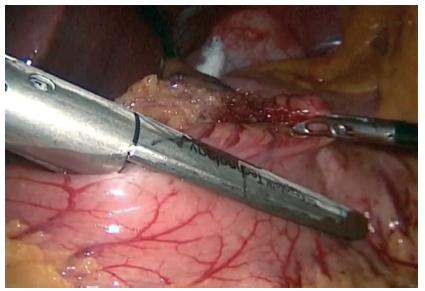ABSTRACT
Background:
Obesity is a major health problem. One anastomosis-gastric bypass (OAGB) is a restrictive and malabsorptive weight loss surgery that carries the same characteristics of Roux-en-Y gastric bypass in its status as a weight loss mechanism; but, its results remain controversial.
Aim:
To describe the technique and outcomes of OAGB and its effects on weight loss and remission of comorbidities.
Methods:
Retrospective review of all patients who underwent OAGB procedure from January 2017 to January 2018. Patients’ baseline characteristics were recorded. The routine in follow-up were at 1, 3, 6 and 12 months.
Results:
A total of 51 patients underwent OAGB. The mean age was 43.8±9.3 years, mean weight was 125±31 and mean BMI was 55.8±12 kg/m2. With regard to comorbidities, 64.7% had type 2 diabetes mellitus (T2DM), 43.1% systemic arterial hypertension (SAH) and 51% dyslipidemia. The BMI decreased for 48.4±1.3 to 31±4.4 at 12 months (p=0.0001) and we obtained an average decreased of 65% excess weight loss (EWL) at 12 months of follow-up. There was improvement in the values of total cholesterol (CT) (p=0.348); triglycerides (TGC) (p=0.0001); LDL (p=0.06), HDL (p=0.029) and A1C (p=0.405). Remission of T2DM al 12 months follow-up after surgery was 57% (p=0.124), remission of SAH 37% (p=0.040) and remission of dyslipidemia of 43% (p=0.967).
Conclusions:
OAGB is a commonly performed and safe procedure. Short term results appear promising; however, long-term follow-up is necessary to evaluate complications and possible nutritional effects.
HEADINGS:
Obesity; Anastomosis; Gastric bypass



